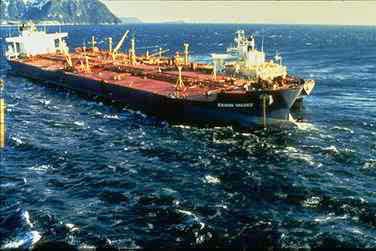The Exxon Valdez Oil Spill on
March 24, 1989, the American oil taker the Exxon Valdez collided with the Bligh
Reef. This created an oil spill with far reaching consequences in the Prince
William Soundin Alaska. Over 11 million gallons of oil spilled over nearly 500
miles polluting the coastline. Over a quarter million birds were killed and countless
other wildlife. Over 11 000 peoples aided in the clean-up process.
How did the oil spill
happened on 24 March 1989?
Here's the answer;
1. The failure of the
third mate to property maneuver the vessel, possibly due to fatigue and
excessive workload.
2. The failure of the
master to provide a proper navigation watch, possibly due to impairment from
alcohol.
3. The failure of
Exxon Shipping Company to supervise the master and provide a rested and
sufficient crew for the Exxon Valdez.
4. The lack of
effective pilot and escort services.
But what really happened? The Exxon Valdez departed from the Trans Alaska Pipeline terminal at 9:12 pm on 23 March 1989. William Murphy is an expert ship's pilot hired to maneuver through Valdez Narrows was in control of the wheelhouse. At his side was the captain of the vessel. Joe Hazelwood and Helmsman Harry Claar was steering. After passing through Valdez Narrows, Murphy left the vessel and Captain Hazelwood took over the wheelhouse. The Exxon Valdez encountered icebergs in the shipping lanes and captain Hazelwood ordered Claar to take the Exxon Valdez out of the shipping lanes to go around the icebergs. He then handed over control of the wheelhouse to Third Mate Gregory Cousins with precise instructions to turn back into the shipping lanes when the tanker reached a certain point. At that time, Claar was replaced by Helmsman Robert Kagan. For reasons that remain unclear, Cousin and Kagan failed to make the turn back into the shipping lanes and the ship ran around on Bligh Reef at 12:04 am on March 1989 and Captain Hazelwood was in his quarters at that time.
But what really happened? The Exxon Valdez departed from the Trans Alaska Pipeline terminal at 9:12 pm on 23 March 1989. William Murphy is an expert ship's pilot hired to maneuver through Valdez Narrows was in control of the wheelhouse. At his side was the captain of the vessel. Joe Hazelwood and Helmsman Harry Claar was steering. After passing through Valdez Narrows, Murphy left the vessel and Captain Hazelwood took over the wheelhouse. The Exxon Valdez encountered icebergs in the shipping lanes and captain Hazelwood ordered Claar to take the Exxon Valdez out of the shipping lanes to go around the icebergs. He then handed over control of the wheelhouse to Third Mate Gregory Cousins with precise instructions to turn back into the shipping lanes when the tanker reached a certain point. At that time, Claar was replaced by Helmsman Robert Kagan. For reasons that remain unclear, Cousin and Kagan failed to make the turn back into the shipping lanes and the ship ran around on Bligh Reef at 12:04 am on March 1989 and Captain Hazelwood was in his quarters at that time.
 |
| Exxon Valdez on 24 March 1989 |


